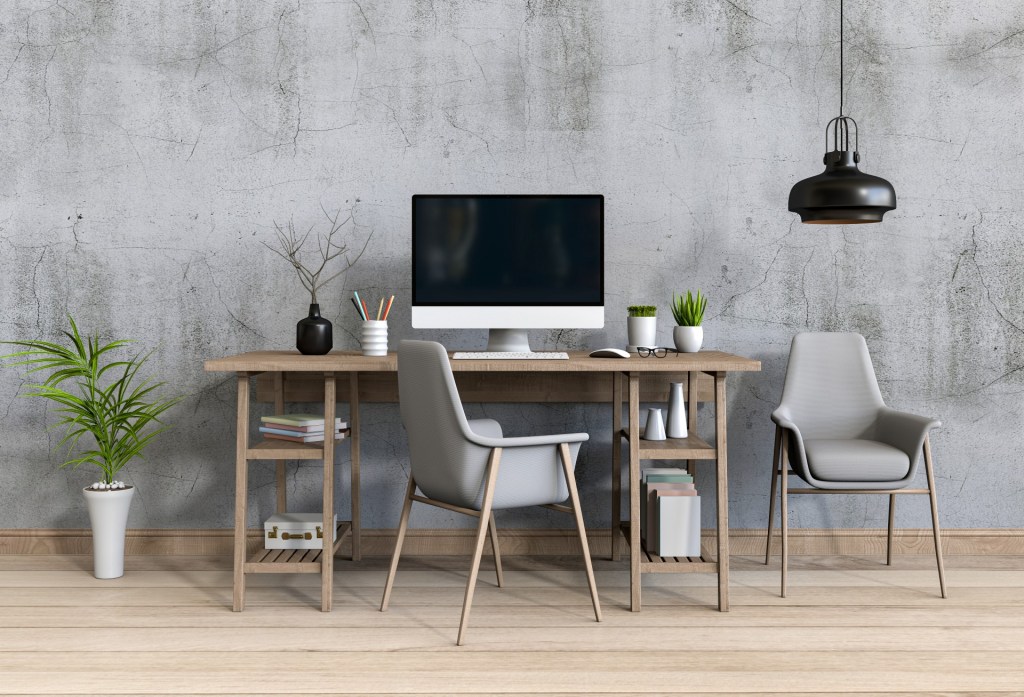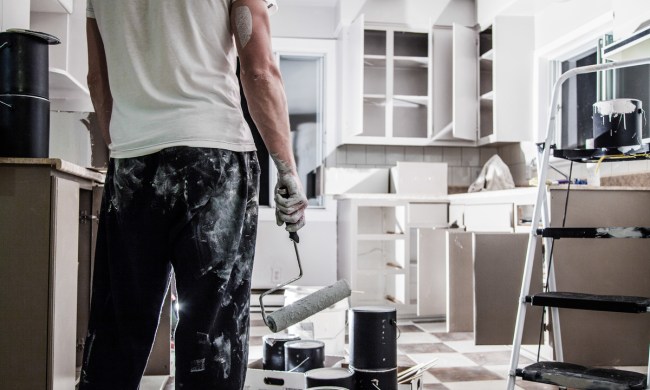These days, more and more people are finding themselves working remotely. Whether it ends up being a temporary situation or becomes the standard for your job, making sure your home office is organized can help make your workday smoother, less stressful, and more efficient.
Some shared home offices are low on space, some have multiple family members using them simultaneously, but virtually all would benefit from a good dose of organization. Whether you share your home office with a spouse, kids, pets, or all of the above, we have tips to help you stay sane and manage the chaos.
 Managing a shared home office
Managing a shared home office
When sharing a small office space with a spouse or roommate, establishing a few ground rules will help to keep your personal relationship intact after your workday has ended.
- Designate individual work zones whenever possible, and try to keep your supplies and equipment on your side. Always keep your side of the room or shared desk clean.
- Wear headphones while listening to audio or video presentations.
- Move to another room when taking phone calls. If there isn’t another space for handling calls, avoid using the speaker function.
- Make sure your kids are appropriately supervised or entertained before you get on a video conference with clients or co-workers,. With older children, utilize a ‘Do Not Disturb’ sign on your home office door, so the kids know when they should not interrupt you.
 How to organize your busy home office
How to organize your busy home office
A disorganized office can lead to a less productive workday but don’t worry, with a few office supply essentials and some minor layout changes, you can conquer the clutter and kick your workday into high gear.
Fix your desk dilemma
Spend less time searching for the things you need and more time being productive by designating a place for everything on your desk. Limit the actual number of items kept on your desk to help prevent clutter buildup, keeping only the most frequently used items like pens, notepads, and an appointment calendar within easy reach.
Institute a ‘no-paper policy’ for your notes and get in the habit of entering appointments, notes, and deadlines directly into your planner, computer, or phone at the end of every workday. Eliminate cluttered drawers by adding plastic drawer organizers. They’ll house your office supplies in designated compartments, so you’ll have easy access to highlighters, staples, sticky notes, paper clips, and more. Just be sure to keep those drawers organized too!
Time to sort
Categorize your files into two basic groups: active and inactive. Active files should be readily available on your desk. Office supply stores have multi-level trays that are perfect for keeping active files corralled and handy, or you can mount shelving above your desk or even add a rolling cart that expands your desk space and storage and can be rolled away when not in use.
Place inactive files in filing cabinets or in labeled storage boxes, and be sure to always properly label inactive files so you’ll be able to find them if and when they are needed again. Establish a system for filing, whether by date, client name, or project category, and remain consistent in how you file documents in the future. Trust us; this will save you a lot of time and stress when you need to find those precious documents.
Think beyond (and above) your desk
There’s workspace available beyond the desk, and you should be taking full advantage of it. Add organizing products to the back of the office door or wall space above your desk to increase storage and free up space on your desk.
You can place a shelf above your desk to hold everyday files, showcase a work award or two, or a favorite family photo, while leaving your desk space free of clutter. Or you can create levels of storage with multiple shelves or wall-mounted storage cubes, keeping frequently used items on lower, easier-access shelves.
Corkboards are a great organizing resource for your home office: Pin important projects, phone numbers, and deadline reminders within easy view. The best part, tacks allow for easy swapping out of pinned items as needed. If the space under your desk can accommodate it, consider adding a small chest of drawers or filing cabinets beneath. You’ll add extra (and almost invisible) storage without taking up additional floor space. Let’s face it, the last thing you need is more clutter on the floor.
Someday you may go back to working in your corporate office, but for now, you are home-based, and it’s important to get the most out of every square inch of your home office space. With a little effort—and these design tips—you can have an office space that’s neat, organized, and ready to take your work productivity up a notch or two.
 Managing a shared home office
Managing a shared home office How to organize your busy home office
How to organize your busy home office


